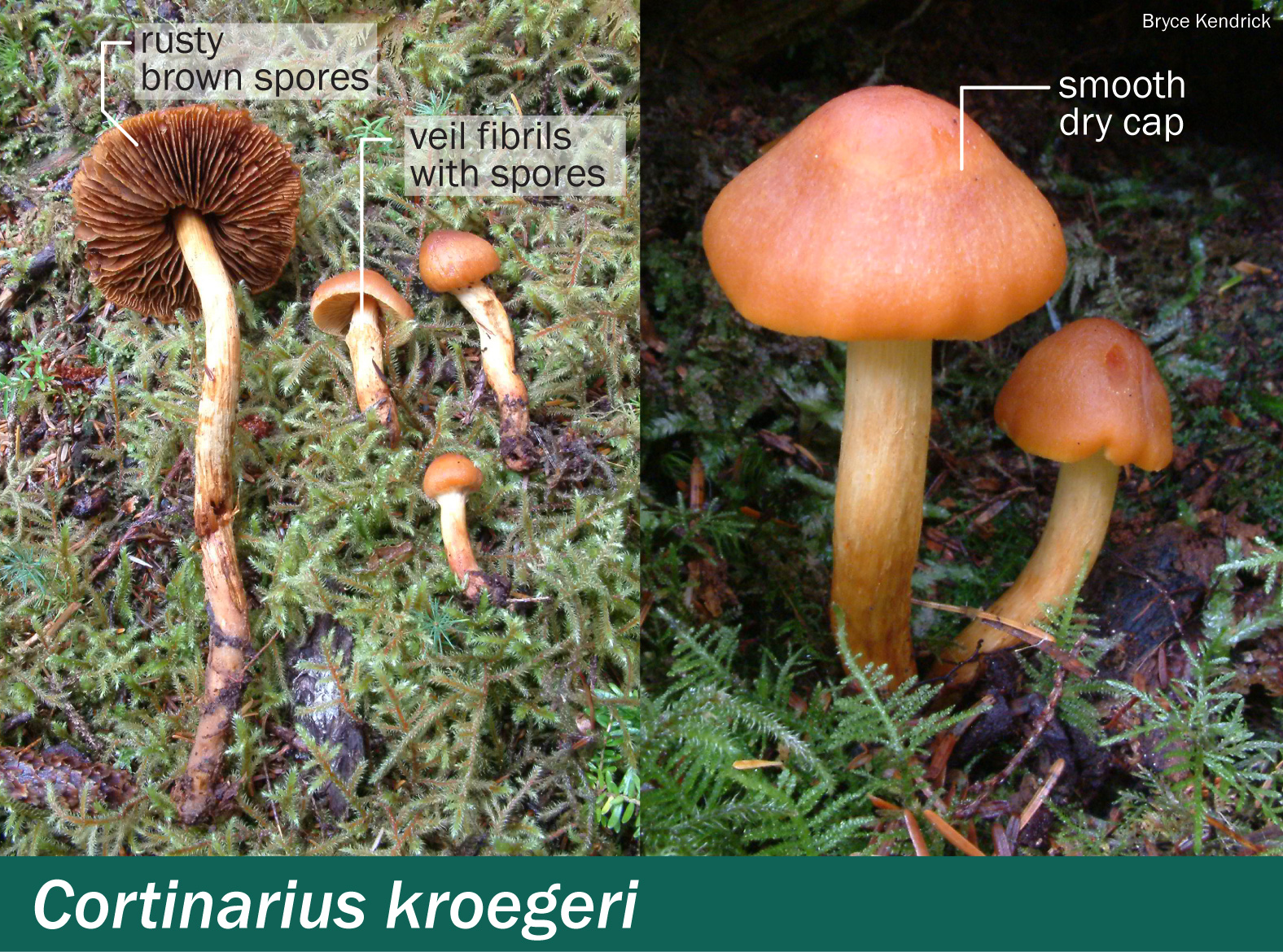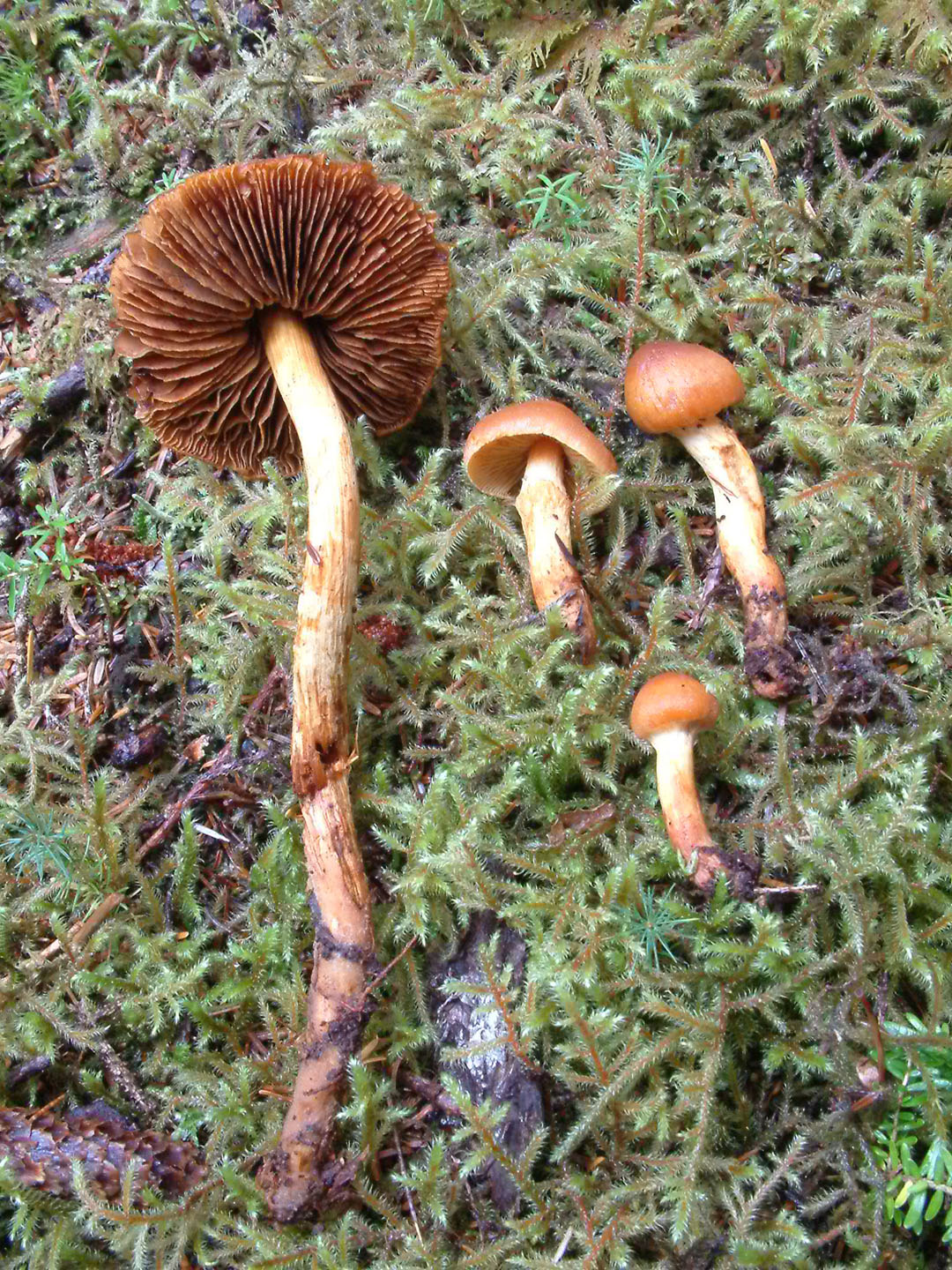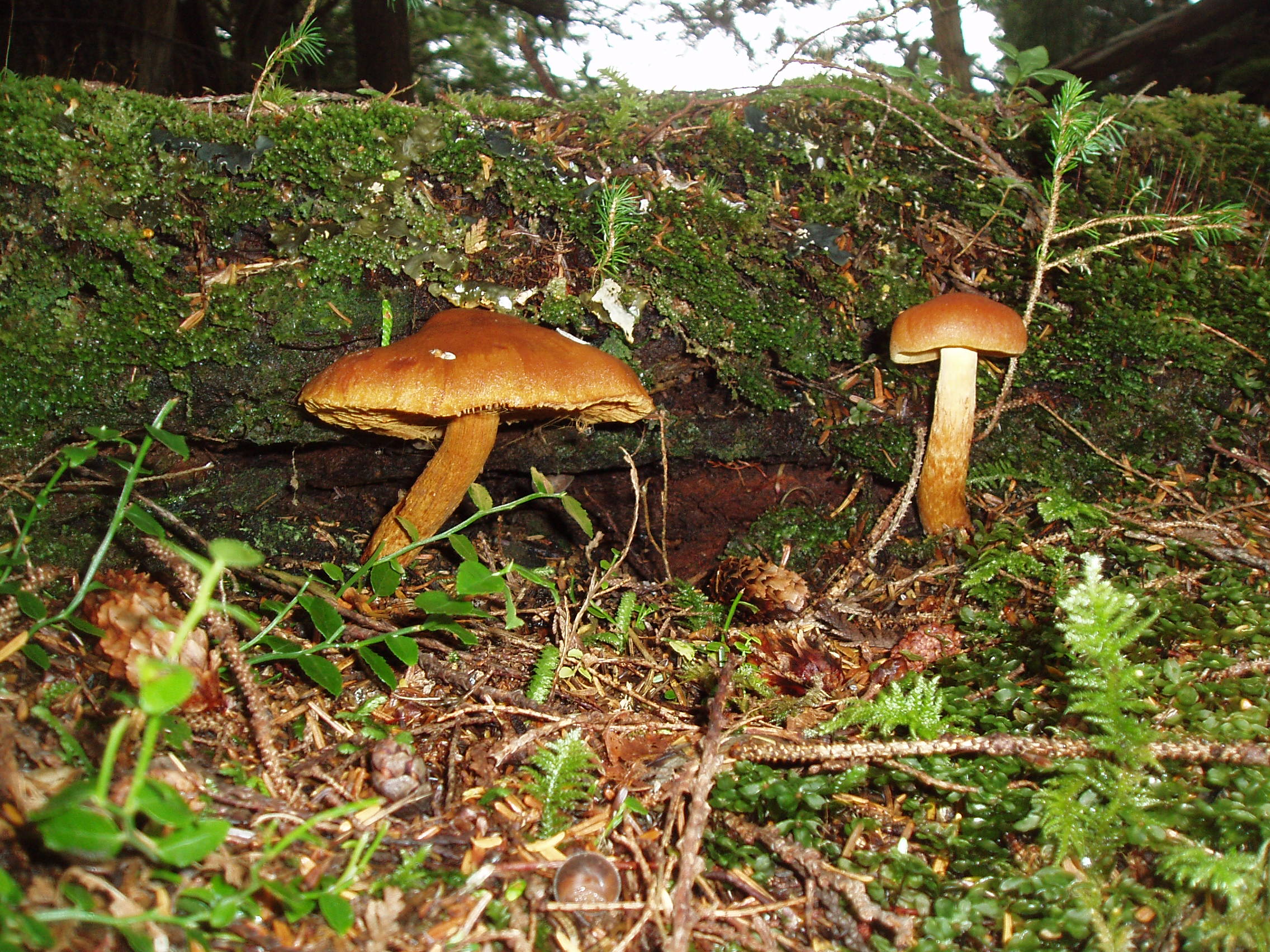Cortinarius kroegeri — Kroeger's webcap
Left image: Kroeger's webcap2 photograph by Bryce Kendrick.
Right image: Kroeger's webcap11 photograph by by Clint Kendrick.
Odour: Mushroom-like.
Cap: 3.5–7 cm in diameter, conical with rounded top when young, later more flattened, but often with a central bump. The margin often remains slightly inrolled until the cap expands fully. The surface is orange-brown, often with yellower margin. It is dry, generally smooth but often with some fibrils.
Gills: Close when young, later more spaced apart, thickish. Narrowly attached to the stem, and often with a thin line, a "decurrent tooth" running down on the stem. The colour starts out as brownish yellow, discolours in patches orange-brown, and becomes darker with spores.
Stem: 4.5–9 cm long x 0.6–1.3 cm wide, narrowest at base. The surface is pale yellow with darker brown or orange-brown to reddish brown fibrils; the stem is darkest at the base.
Ring or veil: Remnants of the thin, spider web-like fibrous veil that gives this group of mushrooms its common name might be visible on the stem.
Cup: None.
Spores: 8–9.5 x 6–7 µm, brown, with a warted surface.
Habitat: On the ground, in small groups, or solitary, in moist old-growth forests with true fir (Abies sp.), western hemlock (Tsuga heterophylla), and Sitka spruce (Picea sitchensis); ectomycorrhizal.
Geographic distribution: Described in 2016, this species is as yet known only from BC and Washington but it likely ranges southwards into coastal California. Earlier collections of Kroeger's webcap were identified as Cortinarius limonius, a closely related species from Europe and eastern North America.
Symptoms: Eating webcaps has occasionally been implicated in minor gastrointestinal upsets6.
Fortunately, in BC and the Pacific northwest poisoning by orellanine-containing webcaps has yet to be reported. Reports from Europe and eastern North America indicate that symptoms of exposure to orellanines become noticeable three days to three weeks after the mushrooms are eaten, too late to protect the kidneys from damage7. Initial symptoms of orellanine poisoning tend be mild and include nausea, vomiting, and diarrhoea. As kidneys fail, these symptoms become more severe and have been accompanied by excess urination and then inability to urinate.
Treatment: Contact your regional Poison Control Centre if you or someone you know is ill after eating any of the webcaps. Poison centres provide free, expert medical advice 24 hours a day, seven days a week. If possible, save the mushrooms or some of the leftover food containing the mushrooms to help confirm identification.
Poison Control:
British Columbia: 604-682-5050 or 1-800-567-8911.
United States (WA, OR, ID): 1-800-222-1222.
Cases of poisoning by related webcap species: In North America, only two poisonings by species containing orellanines have been reported8,9. In Scotland, Nicholas Evans, author of the book The Horse Whisperer mistook a toxic Cortinarius species in this group for the king bolete (Boletus edulis), and wrote about his experiences with the aftermath and the kidney dialysis treatment10. He was fortunate to later receive a kidney from his daughter.



